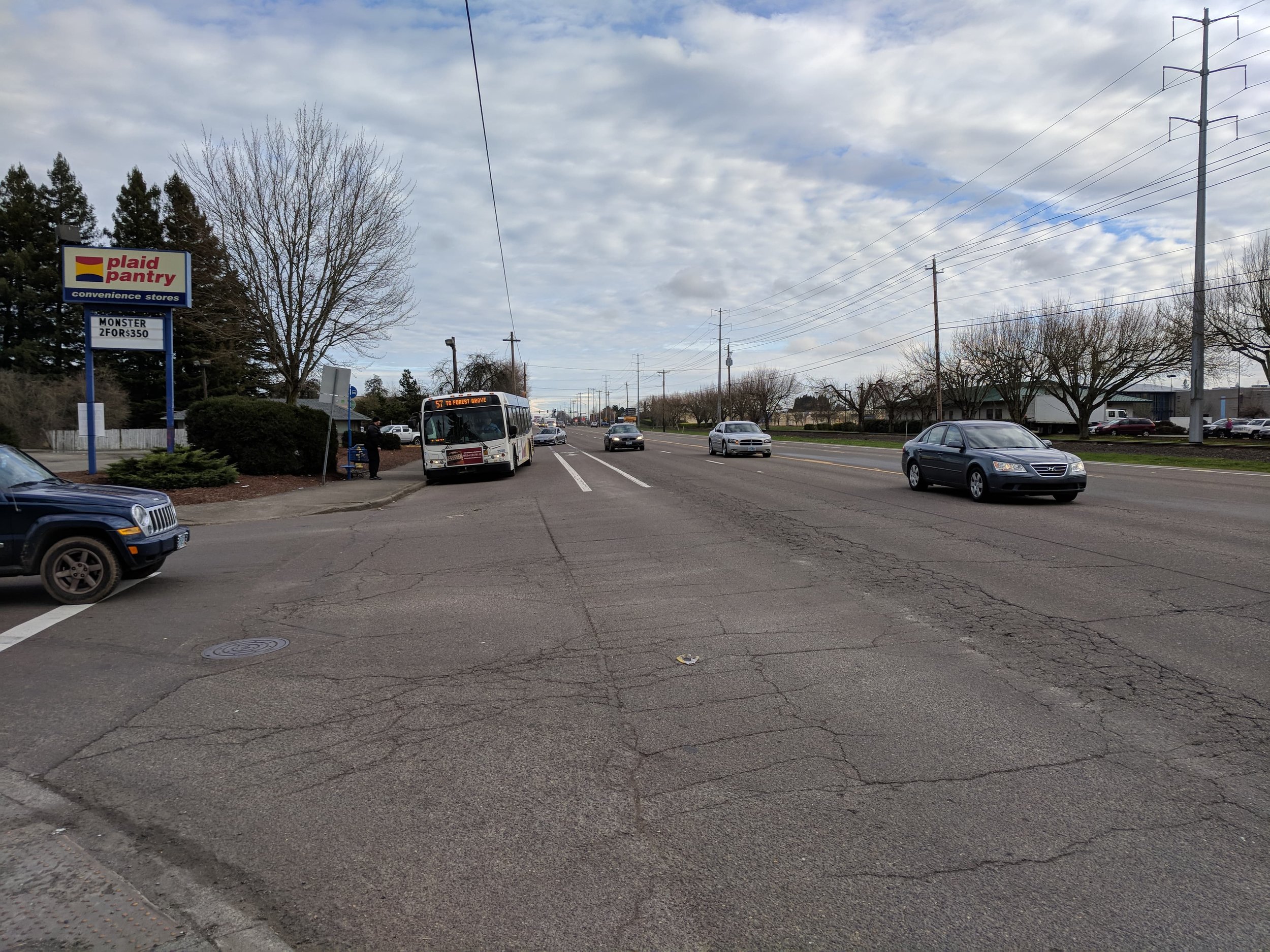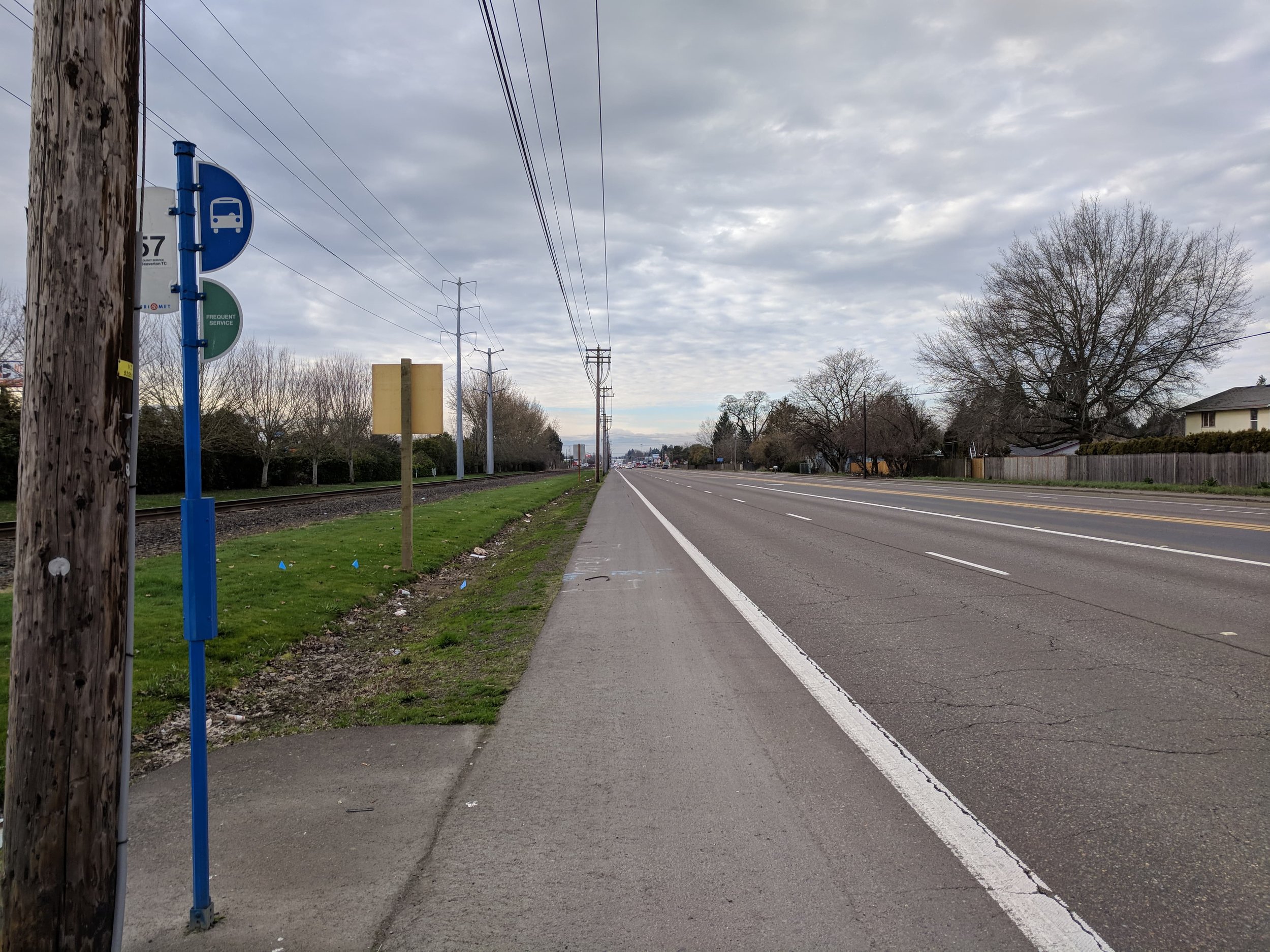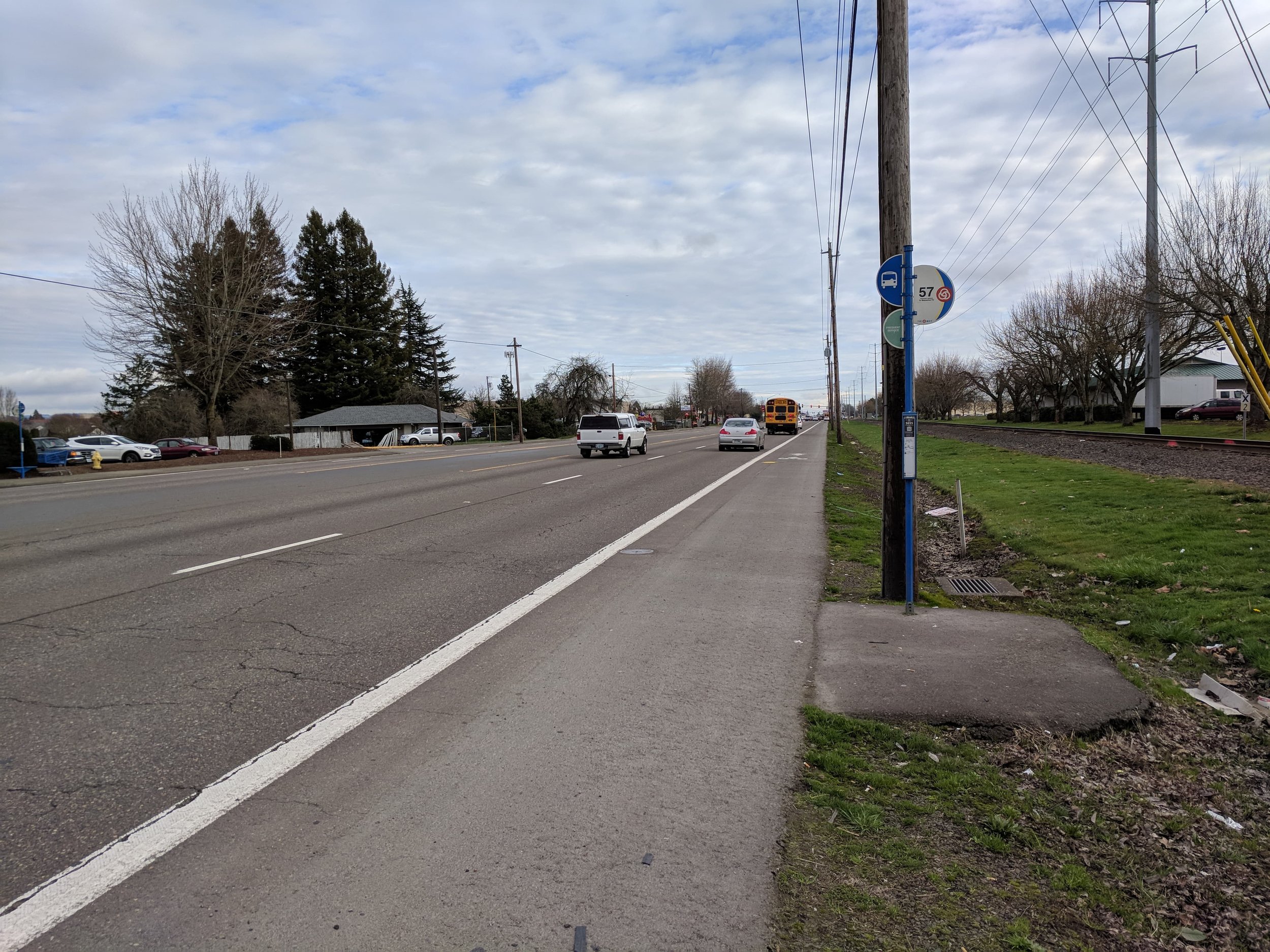Our streets should be safe for everyone — yes, even those who are under the influence.
One year ago, a woman in suburban Oregon crossed the street while under the influence of alcohol and was struck by a driver and killed. Her husband's lawyer couldn't find an engineer in his state who was willing to stand up to the Department of Transportation (DOT) and speak out about the dangerously designed street that played a part in this woman's death. So the lawyer called Chuck Marohn, President of Strong Towns, and he recently traveled to Oregon to testify as part of the case again the DOT.
Chuck's visit to the scene of the crash showed an intersection on a stroad without a crosswalk, signage, sufficient sidewalk or lighting, yet surrounded by businesses, homes and multiple bus stops. In other words, it was precisely the sort of place where someone on foot is likely to want to cross and the crossing is completely unsafe — even for the soberest of people.
A speed study conducted by Chuck showed that, while the speed limit was 45 mph, two out of three drivers were going over that. Some drove as fast as 70 mph.
"The majority of people are going to drive the speed that they feel comfortable driving, regardless of what you set the speed limit at," says Chuck. "And because the lanes are wide, because there's a wide clear zone, because, basically, this is a huge highway, a lot of people feel comfortable driving very fast."
Air bag data shows that the driver who struck and killed the woman was traveling 62 mph just before the crash (although she told police she was going 45).
But Chuck argues that the woman crossing the street and the driver are both victims here. It was not their actions but the design of the road that led to this terrible tragedy.
The Oregon DOT's Pedestrian Safety Plan, created a decade before this crash, had identified the road as an active area where schoolchildren, parents pushing strollers and seniors walked and crossed regularly — especially in areas with businesses and bus stops — but also as a corridor that lots of cars and trucks used at all hours. This combination makes the area particularly dangerous for those on foot, especially since marked or signalized crossings are few and far between. "The DOT had made this such a nasty, horrible intersection that the only people that were ever going to [walk] here were people who had no other choice," says Chuck.
To safely cross the street at a normal walking pace without running or dodging cars, Chuck calculated that a person would need 1500 feet of space on each side of the crossing area due to the speed at which cars are traveling. In other words, cars in both directions would need to be stopped (by traffic signals) a quarter mile away for around 45 seconds in order for a person to safely cross. That virtually never happens.
And the state DOT knew this. They had tracked a history of crashes along this road, resulting in multiple pedestrians harmed. They had noted how a lack of lighting and signalized crossings contributed to this. They had been aware of it for years...
But today, a mother and wife is dead. She had a high blood alcohol level at the time that she crossed this street and a history of substance abuse — something the defense brought up frequently during the court case — but the penalty for drinking should not be death. "We have to reject the notion that people in the throes of [alcohol or drug addiction] would to deserve to die," says Chuck. "We can't throw these people away."
The 8 80 movement, which advocates for streets that are safe for people from age 8 to age 80, has plenty of room for someone who is under the influence of alcohol or drugs and whose judgement may be impaired. We should be designing our streets for children and seniors and, yes, people who are drunk.
So what would it have taken to make this Oregon street (and others like it) a place where people can safely walk to school or work or home from the bar instead of the scene of a grisly death? A little lighting, some signage telling drivers to look out for people, and some narrower lanes. These changes would cost very, very little, especially in comparison to what is typically spent to pave and outfit roads like this one.
"So why can't [the DOT] do it?" asks Chuck. "Because nobody cares." They care enough to write reports and they have written several detailing the ways in which streets can be made safer for people. "These people can write manuals, they can write plans, they can do all this... but they're not putting it into effect," Chuck explains. "For the cost of these studies, they could've fixed this street a hundred times over."
Find out what happened in the court case and what else we can learn from this situation on the latest episode of the Strong Towns Podcast:
(All photos by Chuck Marohn)




